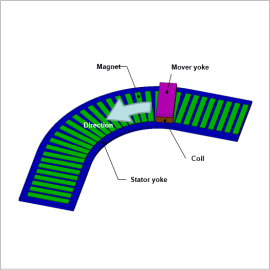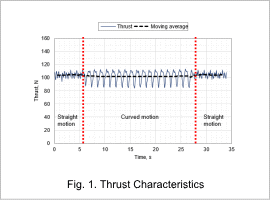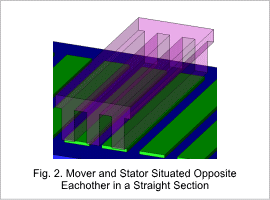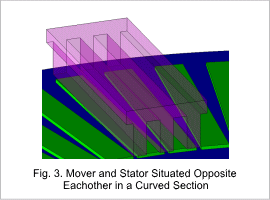Overview

Differences in gap magnetic flux density between linear motion sections and curved motion sections can be difficult to comprehend in virtual calculations. High-accuracy estimations are possible through the use of FEM, which can take into account the effects of material non-linearity and magnetic flux leakage in space.
In this example, the thrust characteristics of a linear actuator with a curved section are obtained via analysis, and thrust at the transition from a linear motion to a curved motion is evaluated.
Thrust Characteristics
Thrust characteristics are shown in Fig. 1.
It is understood that thrust in the curved section is lower compared to the straight section. This is because, as shown in Fig. 2 and Fig. 3, the space between magnets becomes narrower on the inner diameter side of the curved section and widens on the outer diameter side, so the area where the mover and the stator are situated opposite eachother is reduced, and the effective magnetic flux is also reduced.
It is understood that changes in the amount of thrust are large in the curved section. Similarly, as changes occur where the mover and the stator are situated opposite eachother, the magnetic field of magnets becomes non-sinusoidal, but because coil magnetomotive force is a sine wave, this results in the generation of unintended thrust.





